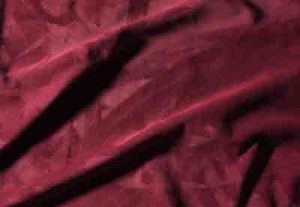The major differences between Velvet and Suede are their air permissibility, elasticity, reaction to heat, the process of manufacturing, origin, maintenance, price, and ability to wick moisture.
If you are finding it difficult to understand the differences between these two materials, we have you covered.
Suede is a leather type of material from animal hides, while velvet is made from synthetic materials or plants.
In this article, we shall be making some in-depth analysis and we will make it as easy as possible so you can understand their application.
So, you have a clear picture of the exact thing that you are going for any time you wish to buy a product that is made from either of these two materials.
Hang on as we show you all the key details that you need to know.
Velvet vs Suede: Do they share any similarities at all?
Table of Contents
Yes, both share similarities in:
- Weight
- Quality
1. Weight
When it comes to weight, there is just a little difference that puts each category of each material apart as both are not originally made from heavy materials.
Normally, lightweight suede weighs 3 to 5 oz of each square yard. Medium weight suede weighs between 5.29 to 12 oz on each square yard, while the weight of heavyweight suede is 12 oz.
On the other hand, lightweight Velvet weighs between 2 to 4 oz, medium-weight velvet weighs between 4 to 8 oz while heavyweight oz.
2. Quality
Both are quality materials. Suede and velvet beat most materials out there in terms of durability. Thanks to the animal hides and synthetic materials respectively, from which both are made.
Which is better?
The better one between Velvet and Suede is Suede. Although both are great and durable and have been satisfying many users, there are levels to this.
The submission of Suede being better than leather is a fact that is based on the statistical preferences of a wide range of users.
It is for the same reason that Suede beats leather as regards their respective pricing where Suede leads by a large margin.
For clarity, we shall be analyzing the reason why Suede is a better choice than Velvet below.
Why is suede better than velvet?

The reason suede is better than leather is that;
- It is more durable
- It has better pliability
- Suede has better aesthetics
- Suede has better lightness and softness
- Suede has great lightness and softness
1. Suede is more durable
Suede can last for years when treated properly. It is a very tough material that has a durable nature compared to most materials like leather and velvet.
This is because of the series of manufacturing processes that are involved in its production. Although Velvet goes through production stages too, but not as much as suede.
2. It has better pliability
Suede has a wider range of applications than Velvet because it can easily be molded and bent. Suede can be fashioned into different clothing types, depending on the trend and need.
Also, because of its thin nature, it can be made into shoes, covers, dresses, or coats relatively easily.
3. Suede has better aesthetics
There is no better satisfaction when it comes to dressing than dresses that give good appeal. The smooth appearance of suede gives it a very good appeal that is pretty pleasing to the sensation of sight and touch.
Without bias, there is hardly any material that can be compared to Suede as regards blending style and beauty. A true sense of elegance.
4. Suede great lightness and softness
The worst material for either shoemaking or clothing making, regardless of weather, are heavy materials.
Both Suede and Velvet are pretty lightweight. Nonetheless, suede still beats velvet in this regard.
The research was done where some groups of people were freely offered suede and velvet products to use and give feedback on their preferences.
A larger percentage went for suede. The aforementioned reasons above were their reasons. This means on satisfaction, statistically, suede beats velvet.
Differences between Suede and Velvet

| Features | Suede | Velvet |
| Origin | Suede is mostly gotten from the hides of animals, usually lambskin. Other animals like goats, pigs, etc are used too. | Velvet is gotten from synthetic materials, special loom, and silk. |
| Price | Suede is pricier than velvet because of the cost and processing of the animal hides for its production. | Velvet is relatively cheaper than velvet. |
| Heat retention | Suede has more heat retention because of its low air permissibility. | Velvet has low heat retention. |
| Breathability/Air permissibility | Suede has low air permissibility because of its low porosity. | Velvet has high air permissibility. |
| Ability to stretch | Suede has low elasticity because of compared to velvet. | Velvet is more elastic than suede. |
| Air-wicking ability | Porosity determines air-wicking extent, so suede has low air-wicking nature. | Velvet has a better air-wicking extent. |
1. First glance
(a). Suede
The first thing that you must notice when you see products from both materials is the large margin of aesthetic appeal between them where Suede wins.
From years back until this moment, suede has always been the “go-to guy” when it comes to fashion and allure. Suede comes in varying colors too. This means you have the luxury of options at your disposal.
At first glance, you are most likely going to notice the luxurious appearance and decorative feel. It often looks like short hairs that are densely packed.
When you see a suede that has consistent hair and color, then know that it has been properly brushed. However, sometimes, it appears less dense and less dark too.
(b). Velvet
The term “Velvety” translates into soft. This smooth soft fabric optimizes luxury. The first thing that you are most likely going to notice at the first glance of velvet is its shiny appearance, high-end feel, appearance, and smooth nap.
The velvet material is indeed an elevated design. Velvet is a great and luxurious fabric and it is characterized by a high-density pile of fibers that are evenly cut.
Velvet has an attractive drape because of the dense pile of fibers. Velvet is famous for different dressing occasions. Initially, velvet is made from mohair, linen, wool, and cotton.
Some synthetic fibers can be used to make velvet too. The bottom line is, velvet has a good look, however, Suede is better.
2. Origin
(a). Suede
The origin of suede traces back to animal skin. Except recently where suede is made from synthetic materials. To make original suede, you must kill an animal (sheep in most cases) to get its skin for your suede.
After executing the animal, what follows is the removal of the fur. Furthermore, splitting the skin ensues where the soft underside is removed from the exterior (usually the thought part of the skin).
At this stage, there are roughage and some imperfections on the hide that go into further sanding, where they get removed to make the skin feel soft and cool.
(b). Velvet
The origin of velvet is traceable to double cloth. Velvet is made from a special loom. It is a double cloth. What characterizes Velvet is its even pile height.
It is not more than half of a centimeter. Although today velvet is made from natural fibers and synthetic materials, years ago it is usually made from pure silk.
The change came as a result of the rarity of silk. Besides, silk is expensive too. The essence of every business is to make gains and velvet manufacturers will be running at a loss if they continue with silk when there is a safer alternative.
Synthetic velvet is made from rayon, nylon, viscose, polyester, and other materials.
3. Price
Suede is pricier than Velvet as most Suede are made from animals’ skin while velvet is made from synthetic material.
However, this is based on the material used for the production of both. The type of Velvet produced from silk as opposed to synthetic materials is pricier than suede.
If they are produced with their natural material, Velvet is costlier than suede. This means velvet is technically costlier than suede.
4. Breathability/Air permissibility
Comparatively, suede has low air permissibility. This is because there are almost no pores in the animal hide material that is used for suede design.
The molecules that make up the material are not distantly packed to allow for much airflow, hence there is heat retainment.
Velvet on the other hand has more air breathability/air permissibility because it is made of synthetic materials whose molecules are not as closely packed as the animal hide with which suede is made.
This is one of the reasons suede is mostly used for the winter season.
5. Heat retention
Suede obviously holds more heat than Velvet. The pores on a material have a direct proportionality to its extent of heat retainment.
And it is only logical that Suede should hold more heat than Velvet since it has little air inflow that is supposed to bring about cooling.
This is why Suede is never easily prone to shrinkage and it always stays in shape because of its high heat retention property.
For this reason, suede is mostly adopted for the production of clothes used in winter like jackets, boots, etc.
6. Ability to stretch
Velvet has more ability to stretch than suede. There is a very low chance of stretchability for materials like suede whose molecules are closely packed and dense to have the slightest bit of elasticity in them.
Besides, there is spandex incorporated in the Velvet weave, this makes it very stretchy and flexible.
This means, while the components of suede give it a touch of rigidity, there are elastic-causing materials in suede that give it a good stretching ability. As regards stretchability, velvet wins.
7. Moisture-wicking
Velvet is more moisture-wicking than suede. A material needs to have a good extent of air inflow to deliver a good moisture-wicking treatment.
The porosity of a material determines its moisture-wicking ability. And it is common knowledge that velvet has far air permissibility than suede.
The porosity of a material is directly proportional to its moisture-wicking. This is why velvet materials are preferred in summer when there is heat than suede.
8. Cleaning
(a). Suede
Can you use water to clean suede?
No, please.
- Water and Suede are not friends. Unlike fabric, when suede is wet, it stains. Here I have a special way to help you clean suede effectively for better results.
- Get a suede brush. A suede brush is a mixture of soft bristles and stiffs. It is specifically designed for freshening and brushing up any type of suede material. Ensure to brush in a downward motion to remove stains and hung particles. Once you are done, your suede would look fresher and finer.
- For deeper cleaning, use a suede eraser. It is usually sold together with a suede brush. It functions similarly with the pencil eraser. When you brush it against your suede, it crumbles together with the dirt therein.
- For general stains, you can use alcohol or white vinegar. Alcohol and vinegar become the best substitutes for liquid-based cleaning methods of suede since water cannot be used for cleaning suede. This method is done by pouring or running a bit of white vinegar or alcohol on a cloth and gently scrubbing it against the stained areas of the suede.
(b). Velvet
- Velvet is easier to clean than suede. While it is true that velvet material is durable enough for everyday use, it also can be very fussy too, so there is the importance of handling it with delicateness. This is because it is easily damaged too.
- Use a fabric brush to brush a velvet material to take off hung strands of fabric or dirt from the surface.
- Once this is done. Check out for stained areas and dampen up a lint-free cloth into tepid water and dab it on the stained areas gently.
- In cases of stubborn stains, then the use of soap becomes the ideal thing to do. Ensure not to use soap with string chemicals. Simple grease-removing dish soap will be perfect. A cup of tepid water should take just two drops of this soap. It is strongly not advisable to leave a velvet material under direct sunlight as it can easily get faded.
Related:
